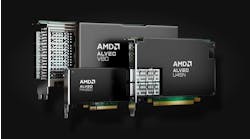Addressing the Pain Points of the Hyperscale Ecosystem
The rapid scalability that defines hyperscale computing can only be accomplished through a combination of new hardware (horizontal scaling) and improved performance of existing data centers (vertical scaling).
Finding the talent and resources to build or expand hyperscale data centers is a pain point that only grows stronger as the scale increases, especially with aggressive installation timelines. This can lead to reduced or omitted fiber and system verification testing, exposing data centers to downstream failures and rework.
Given the massive scale and energy requirements, internet content providers (ICPs), big data storage, and public cloud operators face growing pressure to improve efficiency and reduce emissions. With data centers already consuming approximately 3% of the world’s electricity and emitting a volume of CO2 comparable to the airline industry, clean energy conversion and net-zero carbon footprint commitments are on the rise.
Hyperscale and 5G
5G Changes the Hyperscale Definition
Just as demand and sustainability compete for the hyperscalers’ attention, 5G has entered the picture with a new blueprint for hyperscale computing. Core functions in the cloud continue to anchor the network architecture, but distributed edge computing and disaggregation to support ultra-low latency 5G use cases move hyperscalers out of their proverbial box. In other words, 5G big data remains centralized while instant data moves closer to the edge.
Hyper-Intelligent Hyperscale
5G verticals open up “Jetson-esque” possibilities for more efficient communities and industries. If properly leveraged, 5G data test and assurance solutions can have a similar impact on hyperscale pain points. Intelligence and automation are needed to successfully create, test, and assure 5G network slices deployed from end to end. A successful union between 5G and hyperscale will require AI, machine learning, and network function virtualization (NFV) to achieve new levels of performance.
5G Hyperscale Use Cases
Advanced Driver-Assistance Systems (ADAS)
A truly transformational 5G use case supported by hyperscale computing is Advanced Driver-Assistance Systems (ADAS). Based on emerging “vehicle to everything” (V2E) technology, ADAS establishes a new transportation model with 5G providing the requisite ultra-reliable, low-latency communication (URLLC). Edge computing power is the key to meeting ADAS latency requirements in the 1-2 ms range. Parameters including vehicle spacing, traffic signal timing, pedestrian avoidance, and augmented signage can be fully automated and optimized.
Factory Automation
The 4th Industrial Revolution (Industry 4.0) brings the internet of things (IoT), machine learning, and real-time autonomous decision making to warehouse and factory floors. The benefits of factory automation backed by high bandwidth, low latency private 5G networks are seemingly limitless. Robots, vehicles, facilities, and tools become smarter, safer, and more efficient while maintenance and calibration can be scheduled based on feedback from millions of embedded sensors utilizing hyperscale cloud computing.
Connected Health
Breakthrough innovations like remote surgeries have rightfully attracted public attention, although it may be the everyday healthcare improvements made possible by 5G that ultimately impact and save more lives. Telemedicine can provide a path to routine care for isolated, immobile, or symptomatic patients. The IoT wearable market is set to explode with the capacity boost and latency reduction of 5G. Hyperscale data centers in perfect sync with edge computing locations are the key to supporting these virtual healthcare applications securely and reliably.
Unmanned Data Centers
Hyperscale data centers themselves will become primary beneficiaries of the 5G services they enable. Using the IoT to monitor and control temperature, power, and surveyance functions in real time is in line with a shift towards lights out (unmanned) data center operation, particularly at the edge. Physically removing humans also opens new possibilities for hyperscale data center locations, including frigid, inhospitable regions where land and natural cooling sources are inexpensive and plentiful.
Resolving the Hyperscale Pain Points
Unmanned data centers embracing the IoT give us an important clue to address the pain points threatening hyperscale expansion. As data centers get larger, they will also become more intelligent, flexible, and distributed. Harnessing and embracing new technology (including 5G) to test, monitor, and streamline data center operations is the best way to turn the current challenges into opportunities.
For energy consumption and carbon footprint reduction, this means innovations like intelligent renewable energy grids on or near premises, factory automation to support clean concrete production, and remote operation to scale back the human presence and infrastructure. The use cases being rolled out today are just the tip of the iceberg. Social, environmental, and healthcare issues that have eluded solutions for decades now look to 5G as a beacon of progress and hope.
Despite the emphasis on 5G RAN and device innovations, comprehensive testing of hyperscale data centers is also necessary to ensure the promise of 5G. A proactive approach to pre-deployment fiber, RAN and Xhaul testing recognizes a new standard of automated cloud-based test and diagnostics tools that help rather than hinder construction timelines. This progressive approach to testing also includes live network traffic emulation and AI powered “self-healing” capabilities to prevent outages, repairs, and unplanned updates.
Sameh Yamany, Ph.D., is Chief Technology Officer for VIAVI Solutions where he drives technology innovation and execution for the company. VIAVI has developed a portfolio of test solutions uniquely qualified to address the scale and complexity of 5G hyperscale. Contact VIAVI Solutions to learn more.






